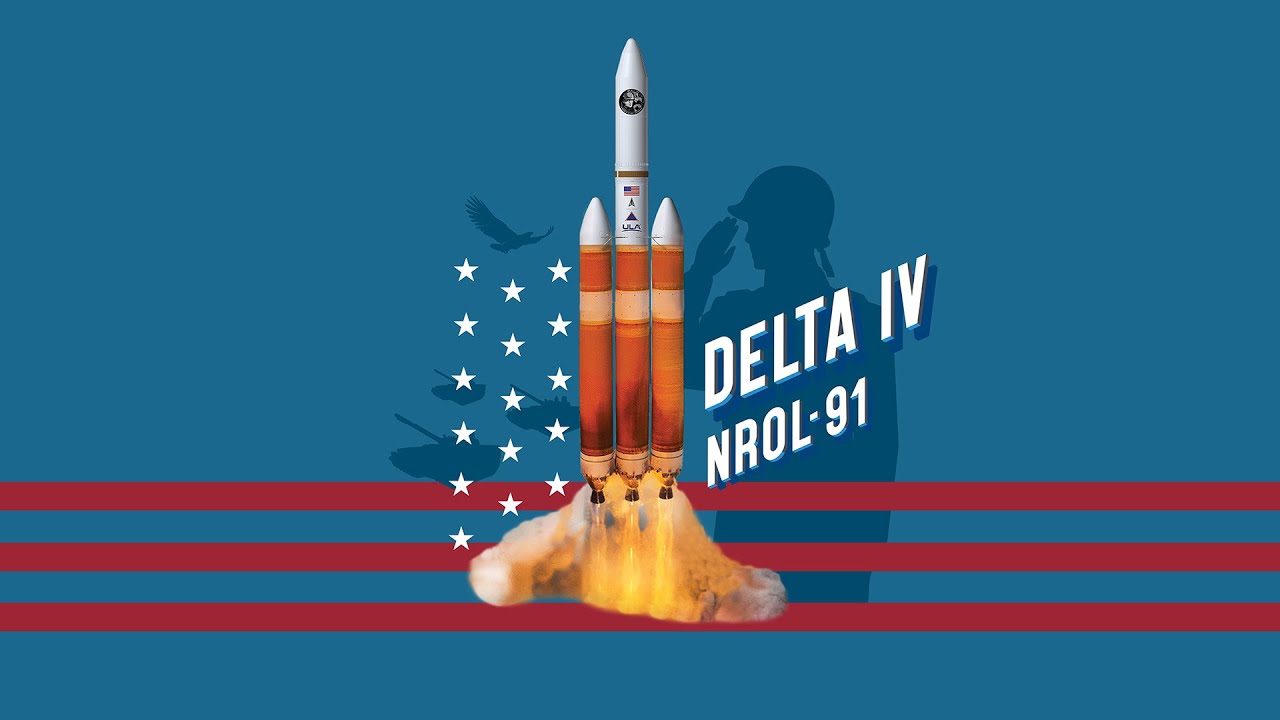United Launch Alliance (ULA) plans to launch a Delta IV Heavy rocket carrying the NROL-91 payload for the U.S. National Reconnaissance Office (NRO). Launch is scheduled for 21:53 UTC on 2022-09-24 from Space Launch Complex 6 at Vandenberg Space Force Base in California. This will be the last Delta IV Heavy to launch from the U.S. west coast; two more Heavies are scheduled to fly NRO payloads from Cape Canaveral in 2023 and 2024 before the launcher is retired in favour of ULA’s Vulcan Centaur rocket, which has been in development since 2014.
As is usual for an NRO mission, the payload and operational orbit have not been disclosed, but based upon the use of the Delta IV Heavy and launch azimuth inferred from the announced safety exclusion zone downrange, it is suspected to be a KH-11 KENNEN family optical reconnaissance satellite. These satellites operate in Sun-synchronous low Earth orbit and are believed to resemble the Hubble Space Telescope in design, with a large primary mirror (2.34 metres on the first generation KH-11s, larger on later versions [perhaps as large as 3.1 metres]) and total mass between 17 and 19.6 tonnes.
If you’ve never seen a Delta IV Heavy launch, it’s a sight to behold. This is the rocket that sets itself on fire every time it launches, due to burning off of hydrogen vented by the RS-68A main engines prior to ignition. Here is the launch of NROL-71 on 2019-01-19 from Vandenberg showing the phenomenon. Note the black smoke from burning insulation on the first stage booster tanks as the rocket ascends from the launch pad.
Delta IV Heavy has been called “the most metal rocket ever”.
Here is a pre-flight preview from Everyday Astronaut.
3 Likes
That fireball is indeed impressive. I wonder at what stage of development this phenomenon was known (or if they knew in advance) and how much effort/experiment/modeling was required to know it would not destroy the rocket; that mere burning of insulation was not fatal to the craft.
3 Likes
I thought it interesting that the center-engine partial throttle (from before max-Q to after side booster separation) was significant enough to be visible from the ground camera. Quite a bit dimmer compared to the full-throttle engines beside it.
4 Likes
The RS-68 engine was designed to be as simple and inexpensive as possible for an expendable hydrogen/oxygen engine. It has 80% fewer parts than a Space Shuttle main engine at the cost of lower thrust to weight ratio and reduced specific impulse. The hydrogen-rich environment during the engine start process is a consequence of this simplification, and I believe the Delta IV designers were aware of it and judged it something they could live with.
However, when NASA was evaluating the RS-68 for use on the Ares V rocket (precursor of the SLS), they found that more than 200 changes would be required to human-rate the engine, among which were “removal of the fuel-rich environment at liftoff”. This proposed version, the RS-68B, was cancelled along with Ares V.
The launch of Delta IV Heavy used to be even more spectacular. The fireball was so intense that the engine start sequence was changed to start the left booster engine shortly before the right booster and central core engines. The exhaust plume of the left engine creates a low pressure area that sucks the excess hydrogen from the remaining two engines down into the flame trench instead of roasting the insulation on the first stage tanks. If you look at the replay of yesterday’s launch, you’ll see the flames are mostly around the left booster due to this strategy.
3 Likes

![[4K] Delta IV Heavy launch fireball + 4K highlight clips, NROL-71 (1/19/2019)](https://scanalyst.fourmilab.ch/uploads/default/original/2X/0/07cf408e8090c2d69ee8ce6f2ae97746221f2e77.jpeg)